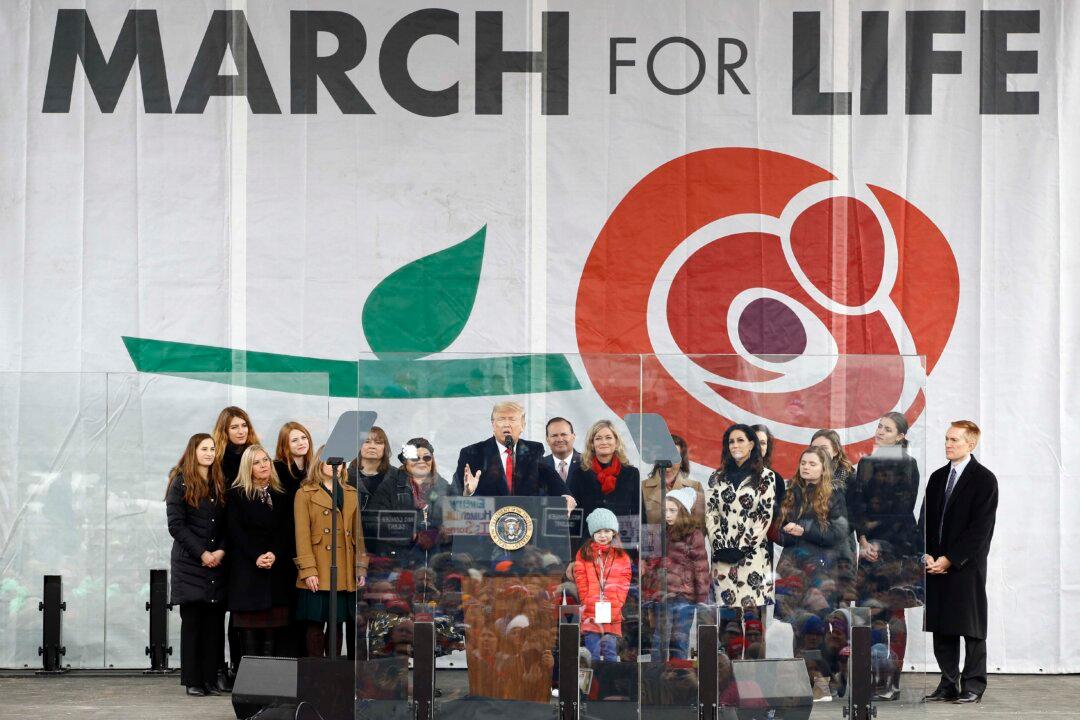
President Donald Trump speaks at a March for Life rally on the National Mall in Washington on Jan. 24, 2020. Patrick Semansky/AP Photo
Commentary
The annual March for Life takes place in Washington, D.C. Friday, 47 years following Roe v. Wade—the Supreme Court decision that legalized abortion.
